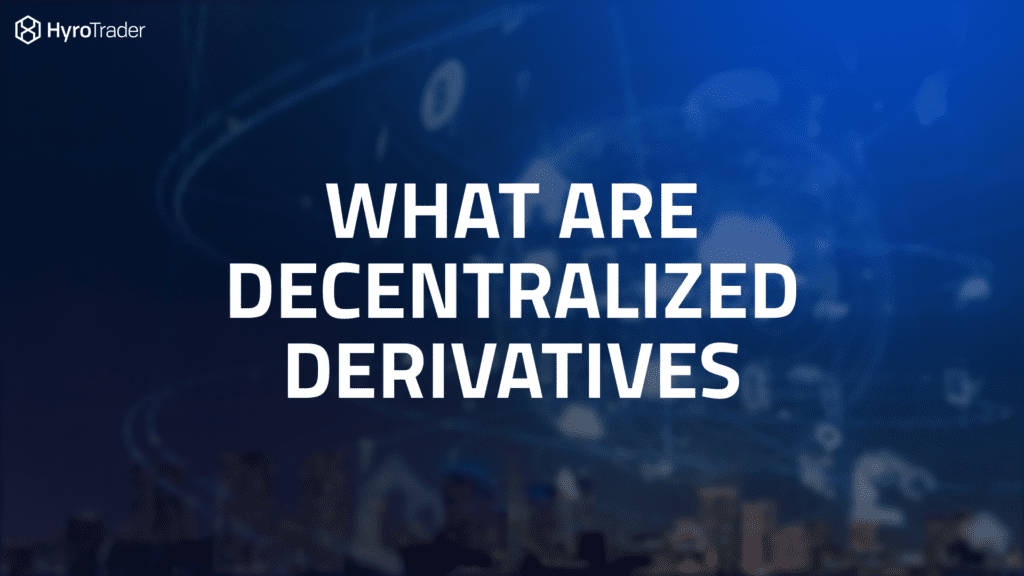
Decentralized Derivatives Unveiled
Decentralized derivatives, a groundbreaking facet of the crypto universe, are financial contracts operating on decentralized platforms, often leveraging blockchain technology. These contracts derive their value from an underlying asset, which can range from cryptocurrencies and commodities to stocks or even other derivatives. What sets them apart is the elimination of intermediaries, such as traditional financial institutions or exchanges, enabling peer-to-peer trading and settlement.
Key Concepts Demystified
1. Underlying Asset:
The foundational asset on which the derivative contract is built is termed the underlying asset. It spans a wide spectrum, including stock indices, commodities like gold or oil, cryptocurrencies like Bitcoin or Ether, or even another derivative.
2. Derivative Contract:
Financial contracts, known as derivatives, derive their value from an underlying asset. Options, futures, swaps, and others fall under this umbrella, allowing traders to speculate on the price movement of the underlying asset without actual ownership.
3. Decentralized Platform:
Trading of decentralized derivatives unfolds on platforms built atop blockchain technology, operating without the need for intermediaries. Smart contracts, self-executing contracts encoded directly into program code, power these platforms, with Ethereum being a popular choice due to its robust smart contract support.
4. Smart Contracts:
These automated contracts govern the trading, settlement, and clearing processes related to decentralized derivatives. Smart contracts execute predetermined tasks automatically when specific conditions are met, streamlining the entire process.
5. Peer-to-Peer Trading:
Decentralized derivatives foster direct trading between participants, eradicating the need for intermediaries like brokers or exchanges. This direct communication ensures transparency and minimizes counterparty risk.
6. Liquidity Pools:
Users contributing assets to smart contracts form liquidity pools on decentralized finance (DeFi) networks. These pools enhance trading accessibility, allowing users to enter and exit positions seamlessly.
7. Automated Market Makers (AMMs):
Algorithms known as AMMs, operating on decentralized exchanges (DEXs), compute asset prices based on available liquidity in the pool. They enable continuous trading, eliminating the need for traditional order books.
8. Risk and Regulation:
While decentralized derivatives offer enhanced accessibility and reduced reliance on intermediaries, they come with risks. Regulatory challenges, vulnerabilities in smart contracts, and potential pricing manipulations are aspects to consider.
9. Decentralized Oracle Networks:
These networks provide smart contracts with external data, crucial for accurately settling derivatives. Oracles supply information on the price of the underlying asset, ensuring the integrity of contracts.
Types of Decentralized Derivatives
In the realm of DeFi, decentralized derivatives manifest in various types mirroring traditional financial instruments.
1- Decentralized Options Contracts: Allow users to speculate on the price development of an underlying asset over a predefined period.
2- Decentralized Futures Contracts: Enable users to agree to buy or sell an item at a defined price at a later time, facilitating risk management and hedging.
3- Decentralized Synthetic Assets: Provide users access to different assets without actual ownership.
4- Decentralized Swaps and Swap Options: Allow users to trade assets based on pre-established conditions, enhancing liquidity and facilitating unique trading strategies.
The Mechanics: How Derivatives Work in DeFi
In DeFi, derivatives function similarly to traditional financial instruments but operate using smart contracts on blockchain platforms like Ethereum. These financial contracts derive their value from underlying assets, indexes, or reference rates, allowing participants to speculate on price changes without actual ownership.
Let’s unravel the mechanics with a hypothetical scenario:
Contract Creation: Participants Alice and Bob enter into a decentralized options contract through a smart contract on a DeFi platform.
Premium Payment: Alice pays Bob a premium (e.g., 0.1 ETH) for the option contract.
Contract Execution:
At the end of the contract period, two outcomes are possible:
a) Increased ETH Price (Alice’s Scenario): If the price of ETH rises, Alice can exercise the option, buying ETH at the agreed-upon strike price and selling it immediately for a profit.
b) ETH Price Remains Same or Falls (Bob’s Scenario): If the price remains the same or falls, Alice chooses not to exercise, and Bob retains the premium as compensation.
Limitations of Decentralized Derivatives
While decentralized derivatives present innovative solutions in the DeFi realm, they are not without limitations.
Technology and Ecosystem Maturation: The technology and ecosystem are still in their early stages, making decentralized derivatives susceptible to errors, vulnerabilities, and attacks.
Scalability and Efficiency Issues: Congestion and high transaction costs on blockchain networks can impact the speed and cost-effectiveness of executing derivative contracts.
Complexity and Accessibility: The complexity of financial derivatives in DeFi may deter less experienced users from engagement, limiting widespread adoption.
Lack of Standardization and Legal Frameworks: The absence of standardized procedures and well-defined legal frameworks hampers institutional participation and adoption.
Traditional vs. Decentralized Derivatives
These two approaches to financial instruments differ significantly.
1- Traditional Derivatives:
Longevity: Long-standing features of established financial markets.
Control: Governed by investor protections and governmental control.
2- Decentralized Derivatives:
Innovation: A result of blockchain technology and the DeFi movement.
Distinctiveness: Lacks investor protections and governmental control, presenting different risks.
The Future of DeFi Derivatives
As DeFi derivatives continue to evolve, innovation and rising demand are anticipated to propel their effectiveness and accessibility. The incorporation of real-world assets, improved smart contract capabilities, and increased regulatory clarity may foster institutional involvement, legitimizing the space.
Challenges such as scalability, user education, and regulatory adaptation must be overcome for DeFi derivatives to realize their full potential as a transformative force in the global financial landscape. While risks exist, the dynamic nature of decentralized derivatives promises a future where financial instruments operate with increased efficiency and inclusivity in the decentralized realm.
Unleash Your Potential with HyroTrader
Embark on a journey of exploration in crypto trading with HyroTrader—the premier crypto prop firm offering funding for crypto traders on Binance and ByBit. Serving as an FTMO alternative for real crypto traders, HyroTrader provides funded accounts and personalized support. Join us to navigate the evolving crypto landscape successfully.
First crypto prop firm, Funding for crypto traders, FTMO alternative for real crypto traders, Crypto proprietary trading firm, Crypto funded accounts, Funded accounts for crypto traders, Funded accounts on Binance, Funded accounts on ByBit.